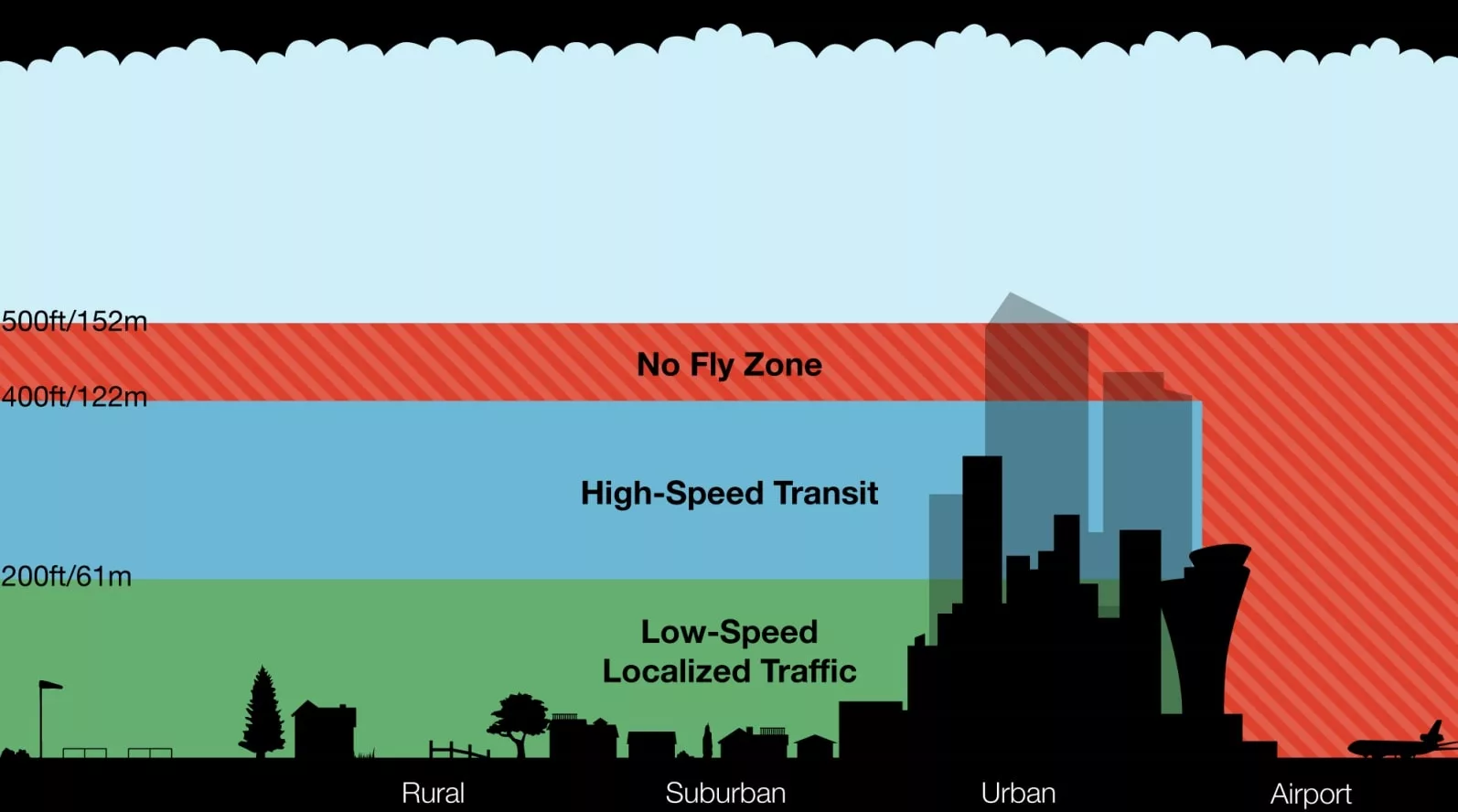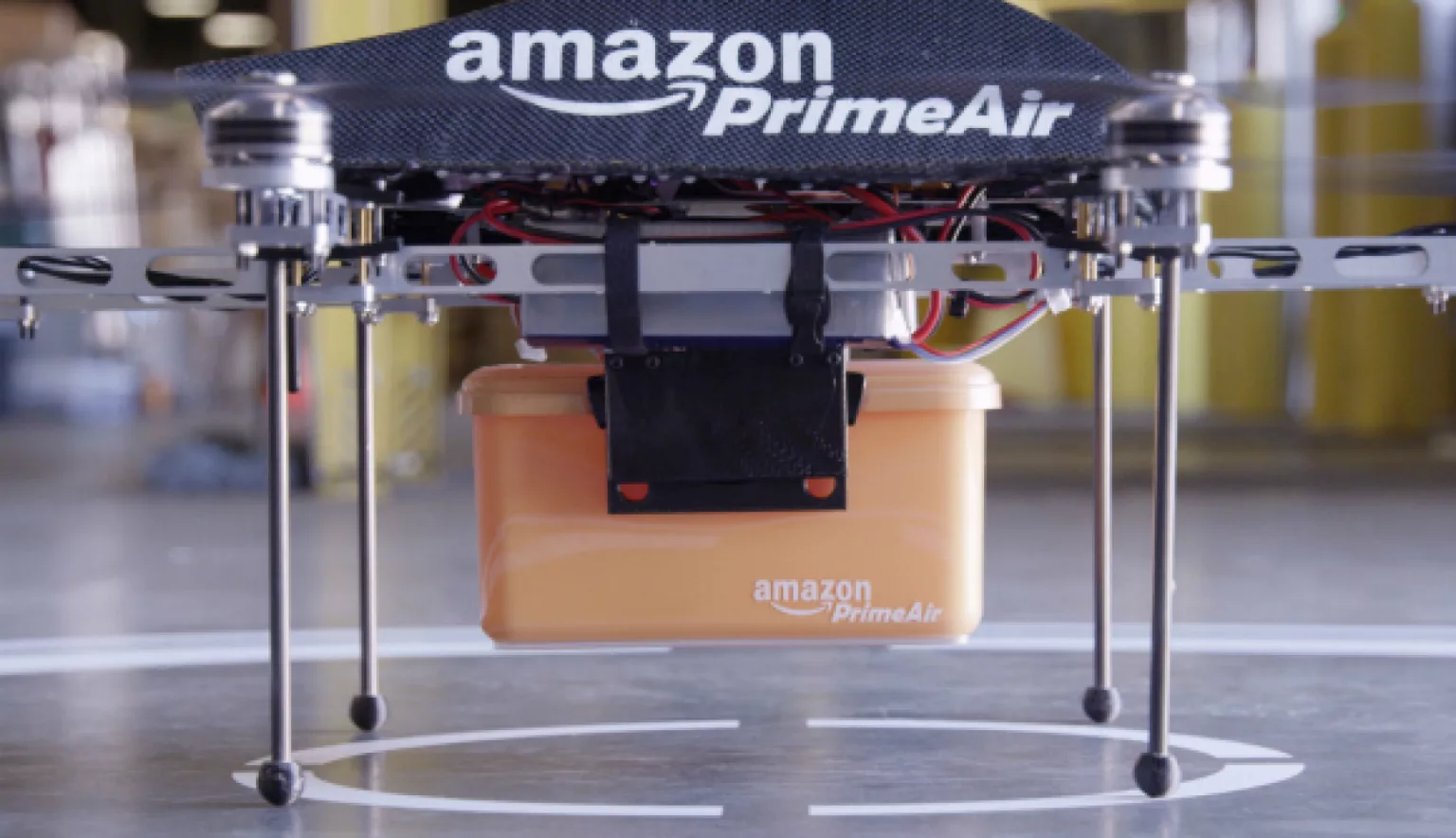In December of last year, Amazon proudly announced its Prime Air concept to deliver future packages by drone, starting with feasibility research in the Company’s biggest market, America; where the Federal Aviation Administration’s (FAA) is expected to finalise its drone regulations within the next year.
After identifying that there are at least 400 million annual shipments from Amazon to US customers that could be eligible for drone delivery, the multinational giant seeks to change the face of the shipping industry with a new and innovative concept; striving to be a first-mover in a risky and heavily regulated air space.
FAA
In April 2015, the FAA granted Amazon permission to test drone delivery in the US, with strict flying rules to remain under 400 feet and at speeds that don’t exceed 100 miles per hour.
The crux of the issue in regulating delivery drones in this airspace is that Amazon wants to overturn the line-of sight clause in the FAA’s proposed rules that state commercial drones must remain within the visual line-of-sight (VLOS) of the operator at all times. This of course would significantly limit the possibilities for drone delivery, ultimately preventing Amazon Prime Air from entering the space.
Despite being far from an agreement with the FAA on this, Amazon continues to push on with its plans to utilise this airspace, from 200-400 feet off the ground, with the hopes that this space will be reserved for delivery drones. The next 100 feet above that would be a no-fly zone, acting as a suitable buffer between drones and commercial aircraft; preventing simultaneous altimeter error of a manned aircraft, a GPS error on a drone or human error from a private pilot. This would mean the FAA would have to revise its current 500 feet low-altitude flying down to 400 feet.
The main issue for Amazon is how high it wants to fly its drones. “We don’t disagree that it is a more difficult use case to fly drones beyond visual line-of-sight. It is. It requires a higher degree of automation in vehicles, and that kind of technology is being developed. Our respectful disagreement with the FAA is that we believe that that kind of operation can be considered right now on the same risk-based approach,” Amazon Global Public Policy Vice President, Paul Misener commented in June.
Weighing up customer convenience with safety, possibility of increased demand beyond the estimates and the possibility of competition from others in this drone airspace are all key factors that are currently being considered.
“We are working diligently to develop a regulatory framework that will allow for innovation while ensuring the safety of other users of the airspace and people and property on the ground,” Federal Aviation Administration Deputy Administrator, Michael Whitaker explained at Amazon’s congressional meeting on Drones earlier in 2015.
These are just a taste of the multitude of complex regulations that would need to be amended in the Notice of Proposed Rulemaking (NPRM) proposed by the FAA in order to match up with Amazon’s demands.
NO-FLY ZONE
From the initial information presented, it seems that Prime Air will be nothing but bad news for drone hobbyists, who currently utilise the low altitude fly airspace around the world.
Amazon has proposed that hobbyists can only fly within the same 200-400 feet zone if their drone is equipped with the following five capabilities; otherwise, you will have to take your drone to a reserved airfield in an unpopulated area to be able to use it:
· Advanced GPS system to pinpoint a drone’s location in real time along with any nearby drones
· A reliable internet connection to maintain communications with that real-time GPS data
· Online flight planning to predict and communicate their flight path
· The ability to collaborate with other drones to avoid collisions
· Sensors to avoid other obstacles such as birds, buildings and cables

The Company says that the way it can guarantee “the greatest safety” is by requiring the above as standard as the level of complexity in the airspace increases, and with it so should the level of sophistication of the vehicle. “Under our proposal, everybody has to be collaborative, all vehicles must be able to talk to each other and avoid each other as the airspace gets denser at low altitudes,” confirmed Gur Kimchi, VP and co-founder of Amazon Prime Air, who detailed the proposal at the NASA UTM Convention in California. Limiting this airspace to “well equipped vehicles as determined by the relevant performance standards and rules” is yet another regulation that the FAA would need to amend if it were to allow Amazon entry into the drone market.
Although the above is deemed necessary for safety reasons due to increased volumes of traffic, many will argue that drone hobbyists are a significant community that have long been present before Amazon decided to try and commoditise the space. The five capabilities outlined will pile more cost onto an already expensive hobby that could be said to act as a deterrent for those already using the low altitude zone. Moreover, those who have already spent their money on a drone could find it is no longer legal to do so and lead to many disgruntled enthusiasts.
COMING TO A COMPROMISE
If the FAA gives Amazon clearance for commercial rollout of its drone delivery service, it is likely to disrupt traditional package delivery significantly, but benefit the customer with the average delivery charge of a two kilogram package as low as $1.1 and a delivery time that could drop below 30 minutes.
Amazon has pledged with confidence to its customers that the Prime Air service will be ready as soon as its plans are approved. After years of exploration into the technology, the Company is taking this venture very seriously and hopes to eventually use drones to deliver packages to customers at a distance of 10 miles or more. “We’d like to begin delivering to our customers as soon as it’s approved. We will have the technology in place by the time any regulations are ready. We are working very quickly,” said Misener.
It is clear that in order for this delivery system to work, both the FAA and Amazon will have to compromise and work hard to find a solution that suits both parties. However, the FAA is responsible for the safety of those on the ground, which will always prevail as a much more important factor to consider than receiving a small parcel as quickly as possible.
Going forward, if Amazon do succeed in coming to an amicable working agreement with the FAA, there will no doubt be interest from other ecommerce companies in the rollout of a delivery drone service. In an era where convenience is king, there is certainly potential to capitalise on this modern and innovative solution to on-demand shipping, on the other hand, understandable scepticism will continue to remain at the prospect of a sky filled with delivery drones for a long time to come.


































